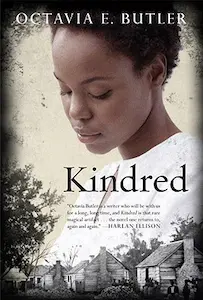Kindred - Summary
Octavia E. Butler

Introduction
“Kindred” by Octavia E. Butler is a powerful and thought-provoking novel that explores the complexities of race, identity, and history. Set in both the present day and the antebellum South, the story follows the journey of Dana, a young African American woman who finds herself repeatedly and inexplicably transported back in time to a Maryland plantation.
The Premise and Plot
Dana, a modern-day black woman living in 1976 California, suddenly finds herself transported back to the early 19th century whenever a young white boy named Rufus is in mortal danger. As Dana’s time-traveling experiences continue, she realizes that Rufus is her ancestor, and her survival is crucial for her own existence in the present.
The Complexities of Slavery
Octavia E. Butler skillfully delves into the complexities of slavery through the eyes of Dana. As she is forced to navigate the brutal realities of plantation life, Dana grapples with her own identity and the stark contrast between her life in the present and the horrors of the past. Butler vividly portrays the physical and psychological abuse endured by enslaved individuals, highlighting the dehumanizing effects of slavery on both the enslaved and the slaveholders.
The Paradox of Dana’s Existence
Dana’s existence in both the present and the past creates a paradox that challenges her sense of self. In the present, she is a free woman with rights and agency, while in the past, she is seen as property and subject to the whims of her white ancestors. This paradox forces Dana to confront her own privilege and the privileges denied to her ancestors. Through her experiences, Butler prompts readers to reflect on the lasting impact of slavery and the ongoing struggle for racial equality.
The Complex Relationship with Rufus
Rufus, Dana’s white ancestor, plays a central role in the novel. Their relationship evolves over time, from childhood friends to master and slave. Dana’s survival depends on maintaining Rufus’s trust, which often requires her to compromise her own values and beliefs. This complex dynamic raises questions about power, survival, and the lengths one must go to protect oneself and others in the face of oppression.
The Role of Gender
In addition to exploring the racial dynamics of slavery, Butler also delves into the gendered experiences of both enslaved women and white women during this era. Dana, as a black woman, faces a unique set of challenges and dangers, including the constant threat of sexual violence. Meanwhile, white women are shown to be complicit in upholding the institution of slavery, benefiting from the labor of enslaved individuals while being constrained by societal expectations. Butler’s exploration of gender adds another layer of complexity to the narrative, highlighting the intersecting oppressions faced by different groups.
The Importance of History
“Kindred” emphasizes the importance of understanding and confronting history. Through Dana’s time-traveling experiences, readers are confronted with the harsh realities of slavery and its enduring legacy. Butler challenges the notion that history is a distant and disconnected past, instead highlighting its ongoing impact on the present. By examining the past, the novel encourages readers to critically engage with the present and work towards a more just and equitable future.
Themes of Survival and Resilience
Survival and resilience are recurring themes throughout the novel. Dana, as a black woman in both the past and the present, must navigate dangerous and oppressive environments. Her ability to adapt and endure is a testament to the strength of the human spirit. Through Dana’s experiences, Butler explores the ways in which individuals can find strength in the face of adversity and the importance of community support in times of struggle.
The Narrative Structure
Butler’s choice of narrative structure adds depth and complexity to the novel. By alternating between the present and the past, the story highlights the stark contrasts between the two time periods and allows readers to witness the changes in Dana’s character as she grapples with her experiences. The time-traveling element also serves as a powerful literary device, enabling readers to engage with history in a more personal and visceral way.
The Significance of “Kindred”
“Kindred” is a groundbreaking work of literature that challenges readers to confront uncomfortable truths about the history of slavery and its ongoing impact. Octavia E. Butler’s masterful storytelling and compelling characters make this novel both informative and engaging. By weaving together elements of science fiction, historical fiction, and social commentary, Butler creates a thought-provoking narrative that encourages readers to critically examine the complexities of race, power, and identity.
Conclusion
“Kindred” is a must-read novel that explores the enduring legacy of slavery through the eyes of a modern-day woman thrust into the past. Octavia E. Butler’s powerful storytelling and nuanced exploration of race, gender, and history make this book a timeless and important contribution to literature. Through the experiences of Dana, readers are challenged to confront uncomfortable truths and consider the ongoing struggle for racial equality. “Kindred” serves as a reminder of the importance of understanding and learning from history as we strive for a more just and equitable future.